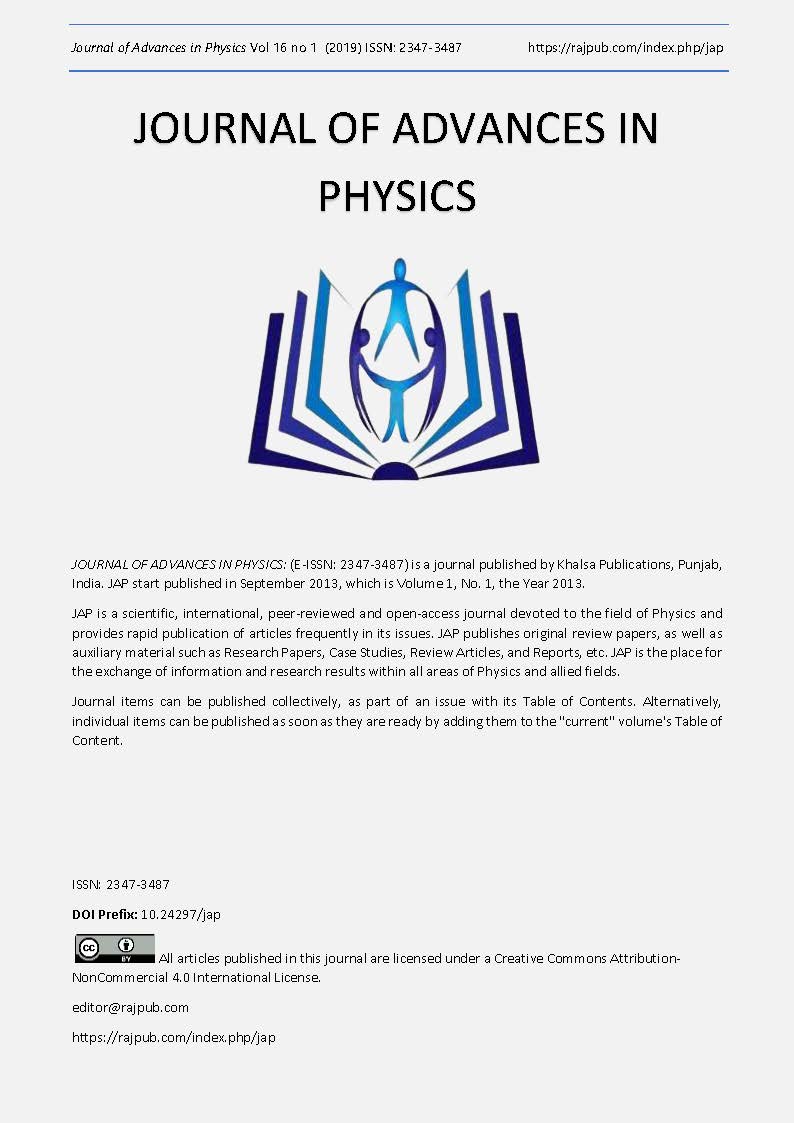Fine-structure constant from Sommerfeld to Feynman
DOI:
https://doi.org/10.24297/jap.v16i1.8402Keywords:
fine-structure constant, fundamental constants, history of physics, golden ratio, quartic equation.Abstract
The fine-structure constant, which determines the strength of the electromagnetic interaction, is briefly reviewed beginning with its introduction by Arnold Sommerfeld and also includes the interest of Wolfgang Pauli, Paul Dirac, Richard Feynman and others. Sommerfeld was very much a Pythagorean and sometimes compared to Johannes Kepler. The archetypal Pythagorean triangle has long been known as a hiding place for the golden ratio. More recently, the quartic polynomial has also been found as a hiding place for the golden ratio. The Kepler triangle, with its golden ratio proportions, is also a Pythagorean triangle. Combining classical harmonic proportions derived from Kepler’s triangle with quartic equations determine an approximate value for the fine-structure constant that is the same as that found in our previous work with the golden ratio geometry of the hydrogen atom. These results make further progress toward an understanding of the golden ratio as the basis for the fine-structure constant.
Downloads
References
[2] Rigden, J.S. Hydrogen: The Essential Element, Cam-bridge, MA: Harvard University Press, 2003, 55.
[3] Eckert, M. “How Sommerfeld extended Bohr’s Model of the Atom (1913–1916),” The European Physi-cal Journal H, 39, 2, 141-156 (2014).
[4] Kragh, H. Niels Bohr and the Quantum Atom: The Bohr Model of Atomic Structure 1913-1925, Oxford, UK: Oxford University Press, 2012, 162.
[5] Eckert, M. Arnold Sommerfeld: Science, Life and Turbulent Times 1868-1951, New York, NY: Springer, 2013.
[6] Sommerfeld, A. Atomic Structure and Spectral Lines, New York, NY: Dutton, 1934.
[7] Kragh, H. “Magic Number: A Partial History of the Fine-Structure Constant,” Archive for History of Exact Sciences, 57, 5, 395-431 (2003).
[8] Sherbon, M.A. “Wolfgang Pauli and the Fine-Structure Constant,” Journal of Science, 2, 3, 148-154 (2012).
[9] Pauli, W., Enz, C.P. & Meyenn, K. Writings on Phys-ics and Philosophy, Berlin: Springer, 1994.
[10] Witteveen, W. The Great Pyramid of Giza: A Mod-ern View on Ancient Knowledge, Kempton, IL: Adven-tures Unlimited Press, 2016, 347.
[11] LaRouche, L. The Power of Reason, Washington, DC: Executive Intelligence Review, 1987, 48.
[12] Beaudry, P. “Pythagorean Spherics: The Missing Link Between Egypt and Greece,” 21st Century Science and Technology, 17, 2, 48-67 (2004).
[13] Beaudry, P. “The Twelve Star Egyptian Sphere that Generated the Great Pyramid and the Platonic Solids,” (2009). lymcanada.org
[14] Director, B. “Riemann for Anti-Dummies: The View from the Top,” (2006). lymcanada.org/67
[15] Director, B. “Riemann for Anti-Dummies: Hyper-geometric Harmonics,” (2006). lymcanada.org/64
[16] Seth, S. Crafting the Quantum: Arnold Sommerfeld and the Practice of Theory, 1890-1926, Cambridge, MA: The MIT Press, 2010, 201.
[17] Sherbon, M.A. “Physical Mathematics and The Fine-Structure Constant,” Journal of Advances in Phys-ics, 14, 3, 5758-64 (2018).
[18] Sherbon, M.A. “Fine-Structure Constant from Golden Ratio Geometry,” International Journal of Mathematics and Physical Sciences Research, 5, 2, 89-100 (2018).
[19] Gabrielse, G., Fayer, S.E., Myers, T.G. & Fan, X. “Towards an Improved Test of the Standard Model’s Most Precise Prediction,” Atoms, 7, 2, 45 (2019).
[20] Aoyama, T., Kinoshita, T., & Nio, M. “Theory of the Anomalous Magnetic Moment of the Electron,” Atoms, 7, 1, 28 (2019).
[21] Aude, H.T.R. “Notes on Quartic Curves,” The American Mathematical Monthly, 56, 3, 165-170 (1949).
[22] Rinvold, R.A. “Fourth Degree Polynomials and the Golden Ratio,” The Mathematical Gazette, 93, 527, 292-295 (2009).
[23] Totland, H. “Quartic Polynomials and the Golden Ratio,” Mathematics Magazine, 82, 3, 197-201 (2009).
[24] McMullin, L. “The Golden Ratio and Quartic Poly-nomials,” (2016). teachingcalcu-lus.files.wordpress.com/2016
[25] Beard, R.S. “The Fibonacci Drawing Board Design of the Great Pyramid of Gizeh,” The Fibonacci Quarter-ly, 6, 85-87 (1968).
[26] Griffiths, D.J. & Schroeter, D.F. Introduction to Quantum Mechanics, Cambridge, UK: Cambridge Uni-versity Press, 2018.
[27] Sherbon, M.A. “Quintessential Nature of the Fine-Structure Constant,” Global Journal of Science Frontier Research, A, 15, 4, 23-26 (2015).
[28] Eisen, W. “The Mysteries of the Constants (e) and (i),” in The Universal Language of Cabalah, Marina Del Rey, CA: DeVorss, 1989, 160-178.
[29] Heyrovska, R. “The Golden Ratio, Ionic and Atom-ic Radii and Bond Lengths,” Molecular Physics, 103, 877 - 882 (2005).
[30] Heyrovska, R. “Golden Ratio Based Fine Structure Constant and Rydberg Constant for Hydrogen Spec-tra,” International Journal of Sciences, 2, 5, 28-31 (2013).
[31] Sherbon, M.A. “Fundamental Nature of the Fine-Structure Constant,” International Journal of Physical Research, 2, 1, 1-9 (2014).
[32] Sherbon, M.A. “Fundamental Physics and the Fi-ne-Structure Constant,” International Journal of Physi-cal Research, 5, 2, 46-48 (2017).
[33] Michell, J. “Is the Fibonacci Sequence or Golden Ratio Represented in the Dimensions of the Great Pyramid of Egypt?” The Fibonacci Newsletter (1974).
[34] Eisen, W. The English Cabalah Volume II: The Mys-teries of Phi, Marina Del Rey, CA: DeVorss, 1982.
[35] Lamy, L. Egyptian Mysteries: New Light on Ancient Knowledge, New York, NY: Thames & Hudson, 1997.
[36] Chaney, E. Initiation in the Great Pyramid, Upland, CA: Astara, 1987.
[37] Ellis, N. Imagining the World into Existence: An An-cient Egyptian Manual of Consciousness, Rochester, VT: Bear & Company, 2012.
Downloads
Published
How to Cite
Issue
Section
License
 All articles published in Journal of Advances in Linguistics are licensed under a Creative Commons Attribution 4.0 International License.
All articles published in Journal of Advances in Linguistics are licensed under a Creative Commons Attribution 4.0 International License.




